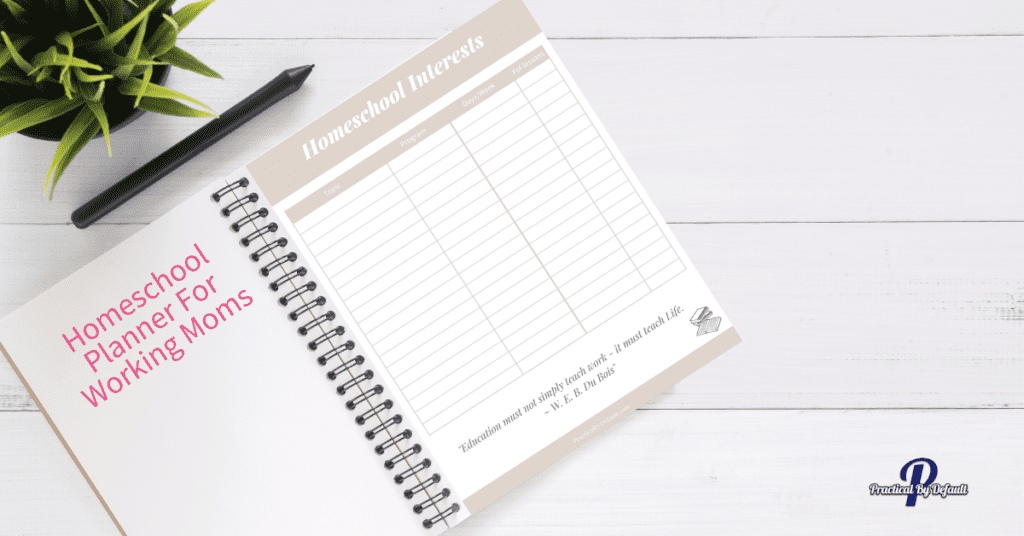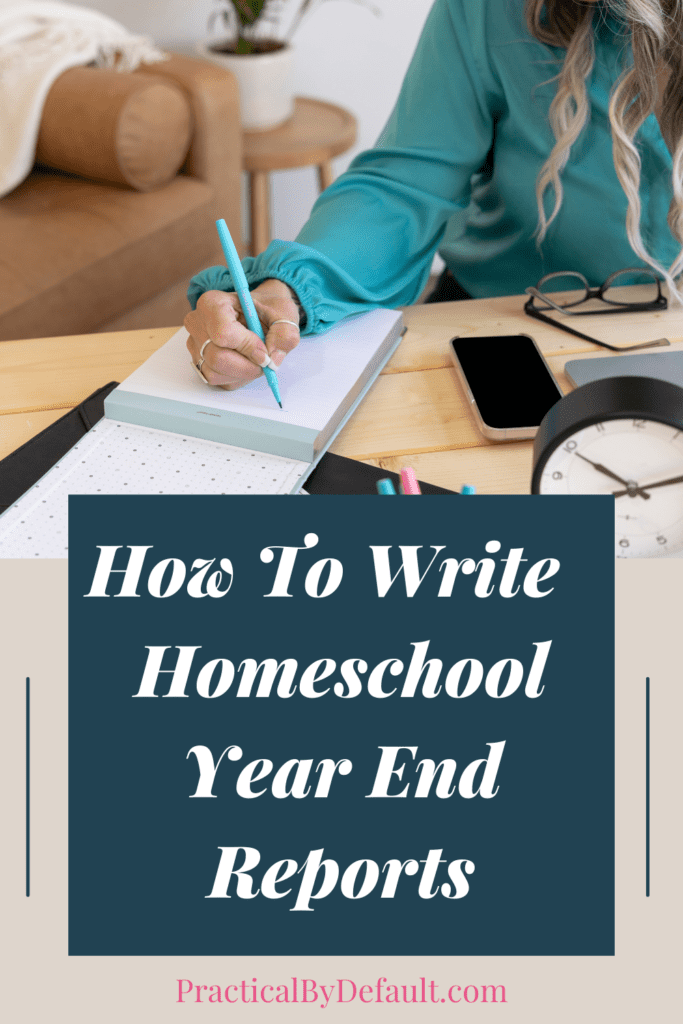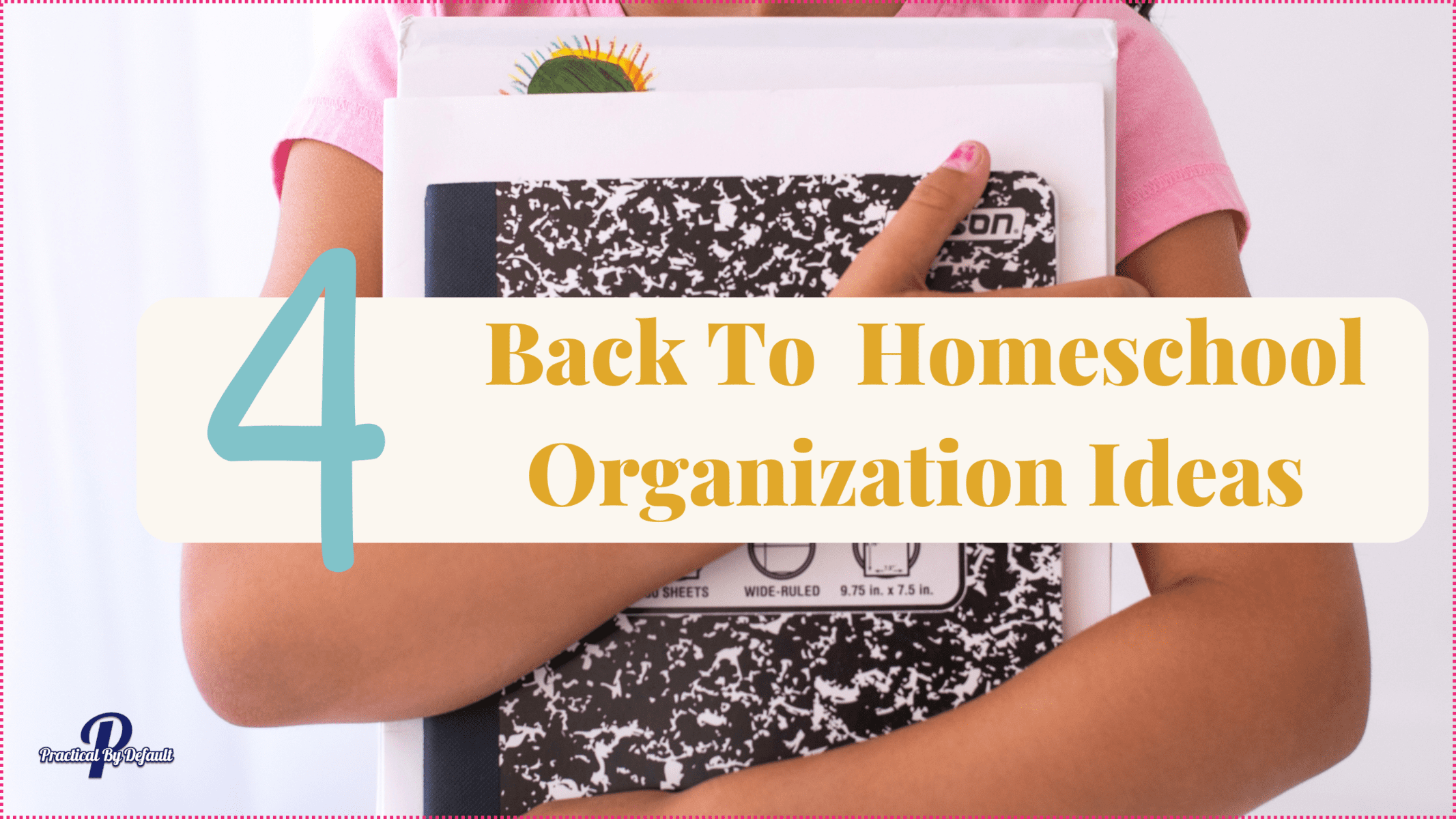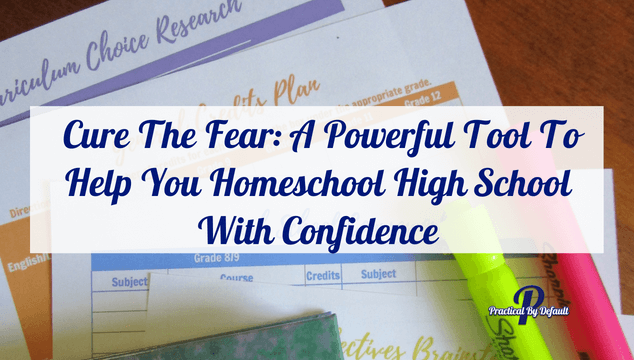How To Write Your Homeschool Year End Reports
Do you need to file homeschool year end reports where you live? Keep it simple. Use these steps to get it done painlessly!
We are wrapping up our homeschool year. I am not sure who is more excited, me or the kids?
However, before the celebration can begin we have one major thing left to do. We need to wrap up our school year and prepare to send in our Homeschool Year End Reports.

Disclosure: I may receive commissions for purchases made through links in this post.
What Is A Homeschool Year End Report?
A homeschool year end report or sometimes called a progress report is a summary created each year of how your child is performing in their home education.
Usually, this is something created by a public school teacher and sent home to the parent.
Why You Need To Write A Homeschool Year End Report For Your Child
You may be wondering what is the point of writing a homeschool year end report or progress report when you are homeschooling, after all, isn’t the point of these reports to tell the parent how well the child is doing? And since YOU are the parent, why should you create one?
- Your homeschool law may require you to submit a year end assessment or report.
- Creating homeschool year end reports for your child is a great way to see how all the hard work you and your child have put into learning new skills or improving skills has paid off.
- Homeschool year end reports are a great way to provide feedback for the non-teaching parent.
- Progress reports provide feedback for your homeschooled child. I found them important for showing my child how far they came in working on a skill.
- Homeschool year end reports provide a great keepsake. Now that I’ve graduated two of my children, I can look back at the happy memories contained in our progress reports over the years.
The Key To Creating Homeschool Year End Reports
Not every state and province requires creating and sending in homeschool year end reports. I’ll show you how to find out what you need in a minute.
In my part of Canada, are required two things.
- We need to fill in a Homeschooling Student Report Form and send them to the school board. This report is due by the end of June.
- We also need to submit a request to homeschool form the following year, including a letter of intent as well as an outline of curriculum choices and subjects we plan on covering.
I like to send them all at once but you can send them in separately if needed.
You can read my detailed step-by-step guide on how to pick a curriculum for your child here!
As most families do send them in separately because they are normal and I am not, I thought I would show exactly how I gather the information to create the homeschool end of year reports.
Sometimes the very idea of creating a homeschool year end report can seem daunting!
So what is the key? The KEY is to keep it simple.
Finding Your Legal Requirements
Before I share how to create your homeschool year-end reports, the first thing you need to realize is that each province/state has its own set of rules as to what is required to homeschool in that province. From discussions, I have learned in the United States, each state seems to have its own rules as well.
Here are some things you may need to do depending on where you live:
- provide a letter of intent
- prove you studied 180 days using a time log
- keep assignments and meet with a state teacher to be assessed
- provide a record of attendance
- provide a list of materials and curriculum used
- submit a notarized affidavit every year
- provide educational objectives and or goals
- maintain a portfolio
- be evaluated by a certified homeschool evaluator
- complete standardized tests depending on the grade
- provide a homeschool transcript
As you can see it really depends on where you live, therefore I recommend making sure you follow the rules of your province/state.
Referring to your local homeschool department of education will help you determine what is required of you and your family.
Here are some quick links to get you started:
Canada HSLDA, information for Canadian Homeschoolers
Also, check this site for frequently asked questions about homeschooling in Canada. She also has a list of Homeschool Laws for the provinces. Re: Manitoba Law, at the bottom of her page, you should see other links to the rest of the provinces.
For the USA, please visit HSLDA USA for information and state requirements.
For information in other countries, please contact your local department of education.

What Should Be Included In Your Homeschool Year End Reports?
Each state and province has specific requirements, which is why I started with that information. If you haven’t looked that up, please do so now.
Once you know what you need to send the information, create a quick checklist to make sure you don’t miss anything.
Here are a few things to include:
- Basic information: you’ll want to include the name, age, and grade or learning level of each child. Some parents like to include a photo as well for a keepsake.
- Resource list: include a curriculum list, books read, any online or group classes your child attended etc.
- Activities and volunteer work: Don’t forget to include any activities such as exta-curricular activities, clubs, etc. Volunteer work should also be included and work hours can also be included
- Samples: I like to include work samples in my personal files even if the homeschool office doesn’t request them. They make a great keepsake and a way to see progress made.
- Grade/Homeschool hours: If your reports require grades or homeschooling days or hours you’ll need to include this information as well.
Since keeping track of all the information can be overwhelming, I included tracking pages inside my homeschool planner for working moms.
4 Steps To Writing a Homeschool Year End Report
Now that you know what must be included, let’s break down how to pull together the information and create your homeschool year end reports for your children.
Step 1: Gathering Information For Your Homeschool Year End Reports
Now that you know exactly what to send to your homeschool board, you need to gather the information.
I pick a day at the end of our homeschool year and we empty out all our homeschool storage boxes and start pulling together all the paperwork.
Personally, I start by digging out the report I sent in the year before that outlined what we were planning on covering. I also dig out the mid-year report I completed to see how we were getting along with our goals. I keep the checklist I created earlier so I know exactly what to include and lastly, I pull up each child’s information on the Homeschool Helper App, email myself the reports and print them off.
Update: Homeschool Helper Is no longer available, I used an online planner called Homeschool Planet.
Step 2: Writing The Homeschool Year End Reports
We are provided with a Homeschooling Student Report Form which can make it super simple to know how to write your homeschool year end reports.
However, I find this does not allow me enough room to fill in all the information I want to provide. It also requests “grades” which I do not use.
Therefore, I choose to write my own reports. I have done this for the past 13 years and they have been accepted.
When writing your homeschool year end reports keep these 5 things in mind:
- Make sure to follow your local laws when you write your report. If you are unsure where to find the law, click here to read what the homeschool requirements are and what they mean.
- Include details such as goals you set and if they were met, grades and test scores, activities as well as the “paper trail” such as photos of projects and experiments and worksheets.
- Use a framework. I love frameworks because they make life easier and can easily be adjusted as needed for each child.
- Include self-assessment. This is often optional but I found asking my child to provide written feedback on how they felt their homeschool year went was valuable. I asked them to include what they thought went well, what needed work and what adjustments could be made going forward.
- Create a template for future use. The key is to keep it simple. As a working mom, you need to be able to save time and energy where you can. Once you have created your first homeschool year end report, create a template and save it for next year.
Step 3: Including Samples In Your Homeschool Year End Reports
“Samples are to be available upon request.” Some states and provinces do not request samples of what your child learned in your homeschool.
However, they are a nice thing to keep in your own files.
How do you choose the samples to be included?
When choosing samples I make sure I do not include only A+ or perfect pieces. I choose work they needed to fix or re-do, to show that they are learning from their mistakes.
I let the children choose 1-2 pieces for each subject that they want to include. They take great care in carefully choosing what to send in. They like to include spelling tests, reviews, book reports, and more.
Sometimes choosing a favorite can be tough work!
When you get the children involved it allows them to see what they have accomplished over the last year and see how far they have come. I find this really helps builds confidence in themselves!
As the “teacher” I find it fascinating to watch them pick and choose. This is one of my favorite moments as they share parts of the last year they liked or dislike, and rehash memories of field trips taken or things they discovered over the last months.
Step 4: Book Reading Lists And Volunteer Work For Homeschool Year End Reports
The last step for creating a homeschool year end report for my child is gathering the book lists and volunteer work.
I print off the book reports I have in the Homeschool Helper app, and the children hand in the reading chart they have kept.
⇒For the children, I use the free book list found in the freebie pack from Notebooking Pages. You can get that here: Notebooking Pages Samples.
After we get all the lists gathered we compare and cross off any books that are included in both lists and make a master list of books read for the year. This list gets included in the documents I send in.
I include any books we have read aloud as a family as well as ones they have read themselves.
I also include any book reports or summaries they have written.
I also print off the volunteer hours tracker that we’ve kept all year.
This year we tried something new letting the children choose their own books. The results are in and my children will be returning to mom choosing a list and they can choose when they read the book. Remember trying new things in your homeschool is important!
One child read only six books and the other read many books. However, they have informed me “that wasn’t as fun as I thought it would be”. Therefore, the children have asked (yes! They asked!) for a list of recommended books to read and they can pick from that list which books to read for the following school year.
You can find the exact curriculum and books the children have read this past school year by checking out Curriculum for Grade 7 and Curriculum for Grade 8.

Shown above is one of the homeschool tracking pages found inside my homeschool planner for working moms.
Bonus Information About Homeschool Year End Reports
Pro Tip #1: Always photocopy everything you send in, and keep a copy!
One year I was informed that I did not send in the forms.
Since I could prove that I sent it because I referenced my dated photocopies and had a receipt from the post office, they were able to check their records. It had been received and filed but not open! I was happy to have my own records that day 🙂
At work, they like to say, “cover your butt!” So, always keep a copy of everything for your sake.
Pro Tip #2: Include contact information
I like to bundle all the above forms along with a professional-styled letter stating exactly what is included in one envelope and send it along.
I also make sure to include how to contact me should they have any questions at any time. I include my email, address, and phone number.
It takes 4-6 weeks to find out if you have been approved as passed, and this approval is sent by letter. I keep this letter for future reference.
Pro Tip #3: Be personal
Your homeschool year end report doesn’t have to be boring. While it is essential that you fill out the state/province-regulated reports with the information and format required, you can also include more personal information attached.
I like to include notes especially if I feel a child has made progress but not as much as I thought. Or if a new skill has been learned and my child wants to dive deeper next year.
How To Gather Information For Homeschool Year End Reports
As you can see sending in the Homeschool Year End Reports can be quite easy if you are organized.
The 4 steps to writing your homeschool year end reports are:
- Gather the required information
- Write the report
- Include samples
- Include book lists, reports and volunteer work
Keep it simple and have fun!
Do you have to write Homeschool Year End Reports? What do they look like?
Take care
Jen.
PS. I share some of my all-time favorite planning books and resources here. Be sure to check them out.
📌Don’t let this post get lost in the internet abyss – pin it to your Pinterest board now!

Linking Up With.

Hi, I’m Jen. I help working moms juggle their career and homeschool their kids by providing support, systems and tools. You are warmly invited to Join the Online Community Here!






